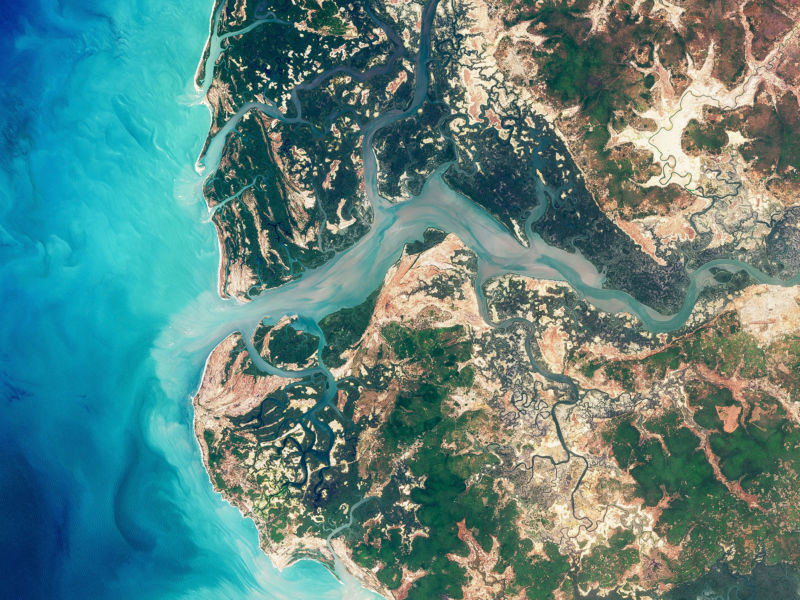More mangroves? Economies recover faster after tropical cyclones

Enlarge / Dark green mangroves along Senegal's Casamance River as it meets the sea. (credit: NASA Earth Observatory)
Where humans have the money, we sometimes build storm defenses like seawalls to protect our coastal cities. But coastal development can often destroy natural defenses like coastal marshes or mangrove swamps. These ecosystems dampen waves and reduce storm surge flooding, and mangroves can even reduce wind speeds.
The protections provided by coastal ecosystem services are typically estimated by carefully looking at a single area or event. A new study led by East Carolina University's Jacob Hochard took another tack, comparing the economic impacts of tropical cyclones around the world with satellite data.
Into the swampsMangrove swamps are ecosystems that develop thanks to a number of species of salt-tolerant trees, collectively termed mangroves, that flourish in the tropics. Their dense root systems trap sediments brought in on the tides and provide habitat for a variety of species. They also act to slow down storm surges and storms, providing a degree of resiliency for the ecosystem and any human infrastructure nearby.
Read 9 remaining paragraphs | Comments